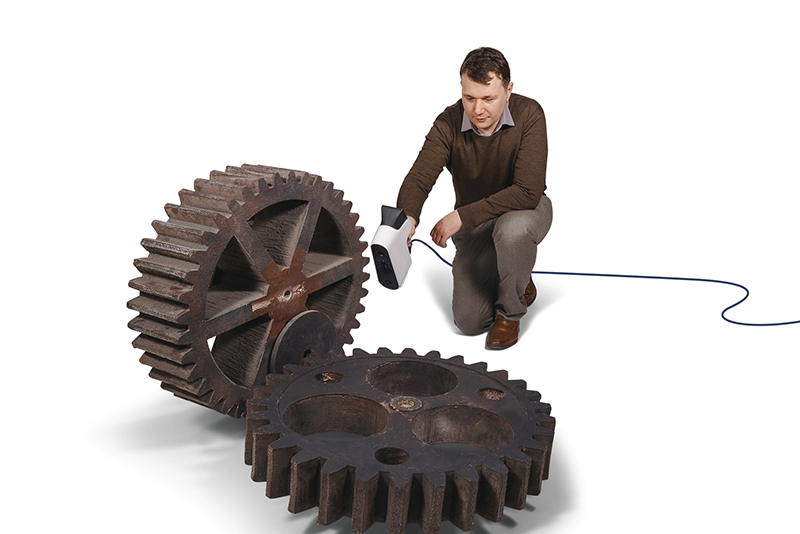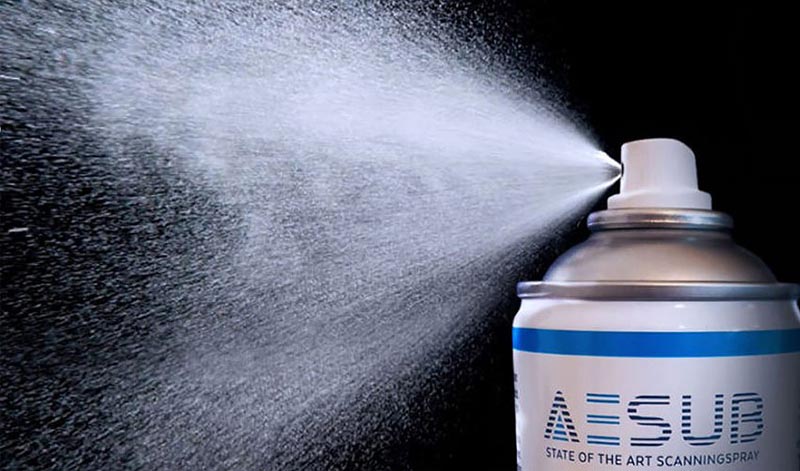
3D scanners are widely used thanks to their potential applications in sectors such as industrial, medical, dental, entertainment, art and others.
The most widely used 3D scanners today are structured light scanners because of their versatility combining excellent resolution, high accuracy, high acquisition speed and low cost, although there are many more types of 3D scanners, such as triangulation scanners, time-of-flight scanners, or contact 3D scanners.
When scanning an object, different factors must be taken into account that will make the user choose one type of 3D scanner or another, or even require the use of additional tools or products to achieve an optimal result.
Type of object
Within some sectors, specific 3D scanners can be found, such as intraoral 3D scanners (aimed at obtaining models of the inside of patients' mouths) or laboratory scanners. Both options allow dental professionals to produce customised parts, adapted to the needs and morphology of their patients quickly and with great accuracy.

Image 1: Intraoral scanner. Source: Shining 3D.
In the automotive sector, for example, contact scanners can be used for some applications, but these types of 3D scanners would not be useful in the art sector, where they could cause damage to works of art due to friction between the stylus and the surface. To learn more about types of scanners, it is recommended to consult the article 3D scanners.
In addition to specialised 3D scanning equipment, there are more versatile 3D scanners suitable for a variety of applications. One example is Thor3D's Calibry scanners, professional handheld scanners based on structured light technology.
Video 1: Presentation of Calibry scanners. Source: Thor3D.
Object size
When 3D scanning an object, the dimensions of the object are also a very important factor. The user must bear in mind that the choice of equipment must be adapted according to the size of the object, as it will require certain characteristics.
In this sense, if the object to be scanned is small, the user must use a 3D scanner with a minimum scanning size compatible with the size of the object. With this in mind, the user will be able to choose whether he/she prefers a handheld scanner or a desktop scanner, and consider the use of a turntable in the latter case.

Image 2: 3D scanning of a small object with EinScan SE. Source: Shining3D.
The user must also consider what level of detail is required. This may vary depending on the intended use of the scanned file of the object.
If the object to be scanned is large, the user should use a 3D scanner with a maximum scan size adapted to the dimensions of the object.

Image 3: 3D scanning of a large object with Calibry. Source: Thor3D.
In this case, the 3D scanning distance allowed by the scanning equipment is also important. In other words, the user must take into account that he/she will need a working space that allows him/her to move around the object at the distance required by the 3D scanner.
Material of the object
In addition to all this data, the user must take into account what material the object to be 3D scanned is made of. This factor is essential, as there are transparent surfaces (such as glass) or very shiny surfaces that 3D scanners cannot capture accurately. This is because light passes through transparent surfaces, while it is reflected on shiny surfaces, which act as a mirror. Thus, they do not allow the 3D scanner to perform its function properly.
Today, companies such as AESUB have developed 3D scanning sprays as a solution to this problem, helping to reduce differences in colour, reflection, texture and any possible heterogeneity that negatively affects the 3D scanning process.

Image 4: AESUB 3D scanning spray. Source: AESUB.
AESUB has different types of sprays depending on the user's needs, such as AESUB White and AESUB Blue.
Both products create a very thin and homogeneous matt layer that supports the optimal detection of the object to be 3D scanned. These sprays are ideal for transparent, reflective or indented areas.
While AESUB White is a non-evaporating 3D scanning spray, ASUB Blue, on the other hand, is an evaporating 3D scanning spray that evaporates completely after some time without leaving any residue on the surface of the objects. AESUB Blue is pigment-free and therefore prevents pigment contamination in laboratories, production plants, equipment and users.
Thus, the user must take into account several factors when 3D scanning an object in order to achieve an optimal result. To do so, the right equipment must be chosen and, if necessary, a 3D scanning spray must be used. Once the object has been scanned, the point cloud needs to be processed. This part of the process is essential to get a quality mesh.












